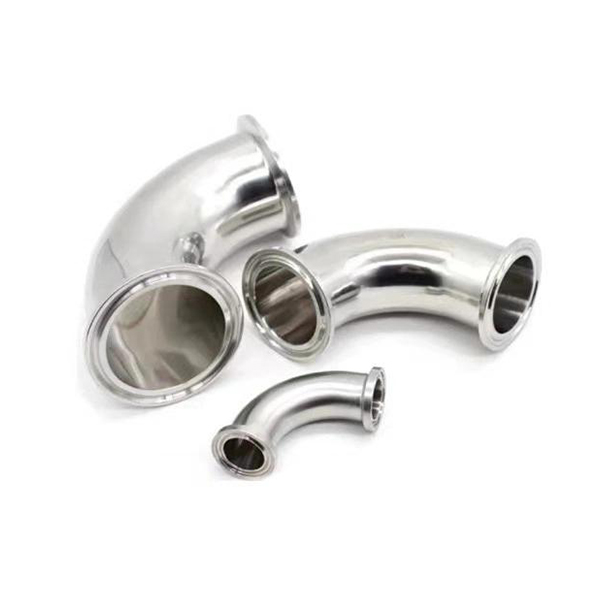Specifications Of Sanitary Stainless Steel Pipe Fittings And The Application And Differences Of Carbon Steel Pipes
Sanitary Stainless Steel Pipe Fittings Application and Difference of Specification and Carbon Steel Pipe
The design rules for carbon steel cannot be applied to stainless steel because there are fundamental differences between carbon steel and stainless steel:
1. Stainless steel has no yield point, usually expressed as ó0.2. The yield stress is considered to be an equivalent value.
2. The shape of the stress/strain curve is different. The elastic limit of stainless steel is about 50% of the yield stress, which is lower than the yield stress of medium carbon steel with respect to the minimum value specified in the standard.
3. Stainless steel undergoes work hardening during cold working, for example, it is anisotropic during bending, i.e., the transverse and longitudinal properties are different.
The increased strength due to cold working can be used, but if the bending area is small compared to the total area and this increase is ignored, the increased strength can increase the safety factor to a certain extent.
Basic Design Procedure
The design procedure for stainless steel is generally derived from the principles currently applicable to various aspects of structural engineering design. However, since stainless steel is usually used in thin gauge steel, its design process is much more complicated than that of carbon steel thin gauge materials. It is important to determine the final use of stainless steel, because in many applications stainless steel is not only used as a structural member but also has to play an aesthetic role. In order to prevent local bending and deformation of the stress-bearing part of the component, the key factor is the limit value of the ratio of the width and thickness of the material. It is also important to mention that the material standard stipulates a maximum value of 0.2. For austenitic stainless steel used in buildings, this value is about 240N/mm2. However, the characteristic strength of the material is generally 15% higher than this value, and designers should take this strength coefficient into account.
